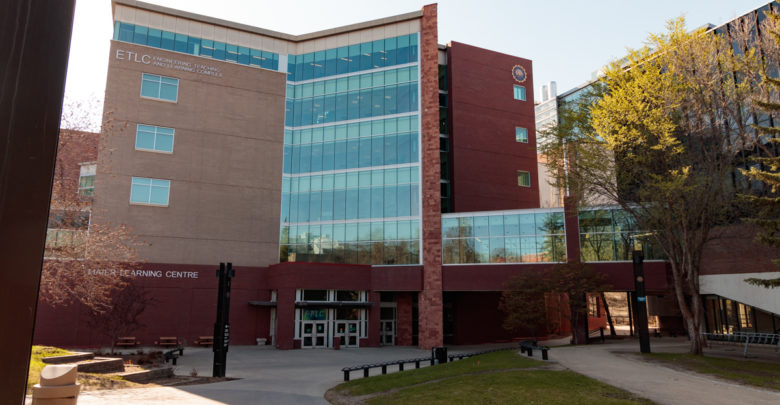U of A releases academic restructuring interim report
The proposals made by the interim report will receive opportunities for community feedback before moving forward
 Christien Ford
Christien FordThis article is part of The Gateway’s ongoing coverage of academic restructuring at the University of Alberta. You can read about the previous June townhall and presentation at Students’ Council.
The University of Alberta is considering consolidating 13 of its 18 faculties in order to find cost-savings as part of its academic restructuring proposal.
The university is undertaking organizational and academic restructuring in order to realize over $120 million in savings through President Bill Flanagan’s U of A For Tomorrow Initiative. The U of A’s Academic Restructuring Working Group (ARWG) — formed in May 2020 to explore options for how to implement academic restructuring — released their interim report of recommendations, which highlights three options for the consolidation of faculties and administration.
The options for consolidation include creating a combined health science faculty, a tri-agency alignment where faculties retain control over their programs but are grouped into three divisions, and creating a hybrid of the two previous plans, involving the consolidation of some faculties while also creating an overseeing administrative body for the remaining faculties.
Currently, the ARWG is recommending the tri-agency alignment scenario — which collapses 13 of the 18 current faculties into three aligned divisions — to maximize cost-savings. However, the university is still collecting feedback and will hold a town hall on September 30 at 1 p.m. The ARWG recommendations will be presented to General Faculties Council later this month for discussion. Ultimate approval of a path forward will be sought by December.
The plan for a significant overhaul to the university comes on the heels of significant budget cuts from the provincial government from Budget 2019 and 2020, the U of A’s $40.2 million operating deficit from 2019-20, and upcoming changes to how the province funds university activities through a new performance-based funding model.
Scenario A: “Health sciences consolidation”

In this scenario, the university would combine the faculties of nursing, school of public health, pharmacy, kinesiology, sports, and recreation, and rehabilitation, creating a health sciences faculty. However, the faculty of medicine and dentistry will remain independent.
All other faculties will also remain autonomous.
According to the university, though the five faculties will be consolidated, each previous faculty will retain “significant academic autonomy” over their programs and research.
According to the interim report’s “qualitative evaluations,” this academic restructuring proposal would generate approximately $10.6 million in cost-savings for the university would be found.
Scenario B: “Tri-Agency alignment”

The scenario recommended most by the working group would split most faculties into the three divisions of health and medical science, natural and applied science, and social science and humanities.
If implemented as proposed, $43 million in cost-savings — over $11 million in leadership costs and $32 million in operational savings — would be found by the university.
In this scenario, each faculty would still hold the name faculty and hold control over its respective program’s teaching and research. The divisions will combine administrative services, recruit faculty leaders, and set each faculty’s budget. Each division will also represent the faculties on the executive deans council.
Under the division of health and medical science would be the faculties of medicine and dentistry, rehabilitation, pharmacy, school of public health, nursing, and kinesiology, sports, and recreation.
Within natural and applied sciences, the facilities of science, engineering, and ALES would be grouped together.
The facilities of arts, education, business, and law would fall under the social sciences and humanities division.
In this scenario, the faculties of Campus Saint-Jean, Augustana, and native studies would remain independent.
The ARWG said this model is recommended due to its high alignment with the institutional vision of the U of A, as it is “strategic,” “collaborative,” “nimble,” “interdisciplinary,” and “EDI-focused.”
Scenario C: “Consolidation and shared division”

In this scenario, the university would combine the faculties of nursing, the school of public health, pharmacy, kinesiology, sport, and recreation into the new school of health sciences.
Engineering and agricultural life sciences would be combined into the school of applied sciences.
Under this proposal, the current faculty of arts and science would be combined into a single school.
This proposal would generate the most cost-savings, assessed at just below $45 million.
More to come…




